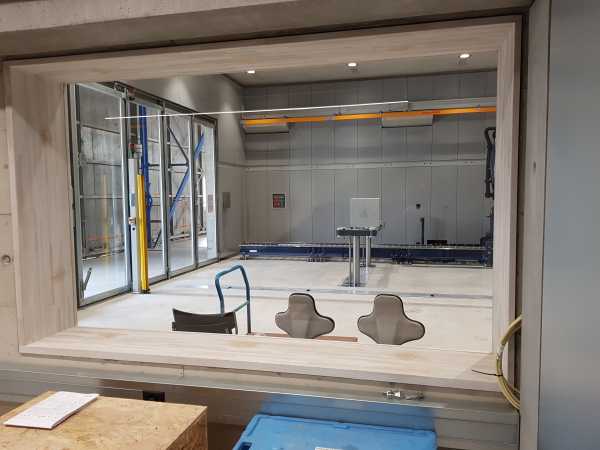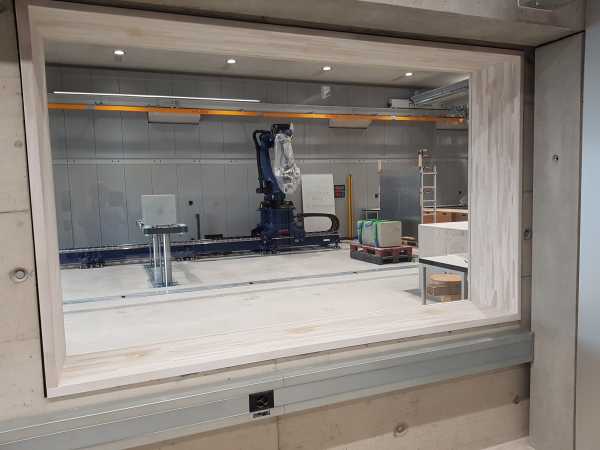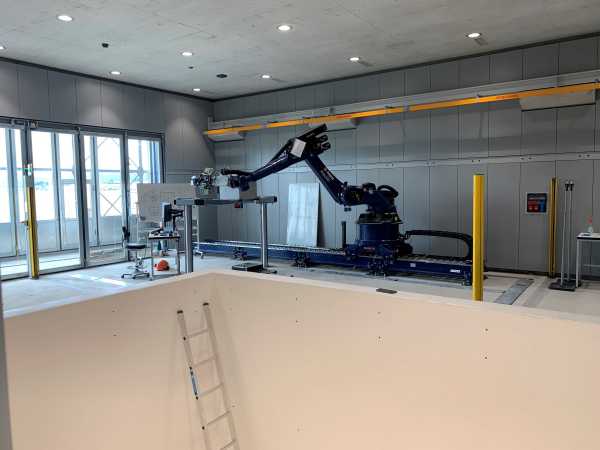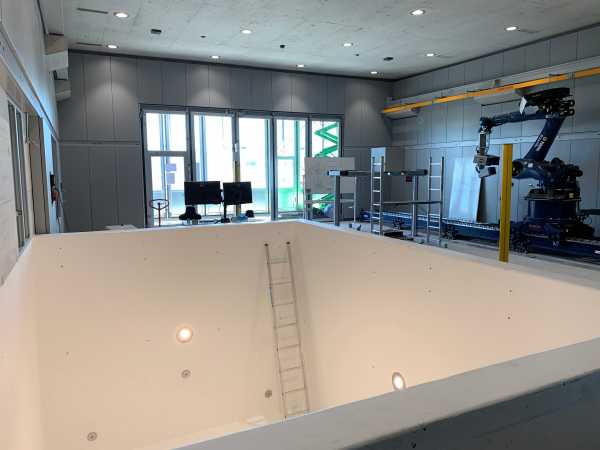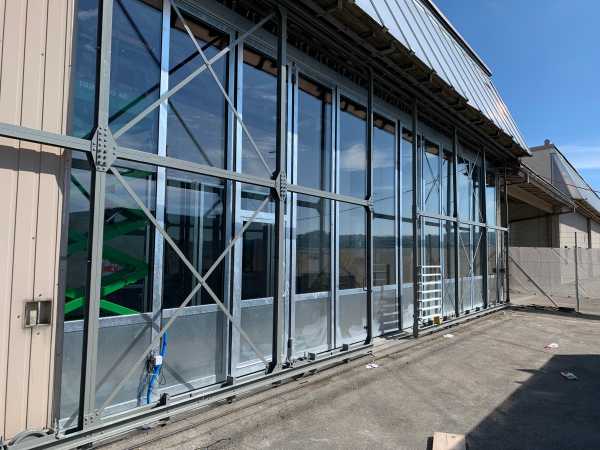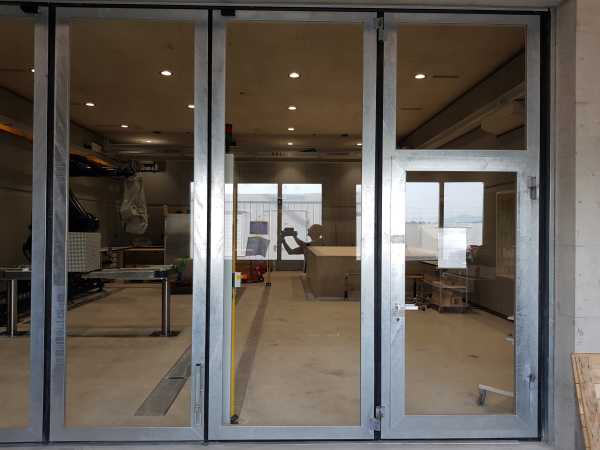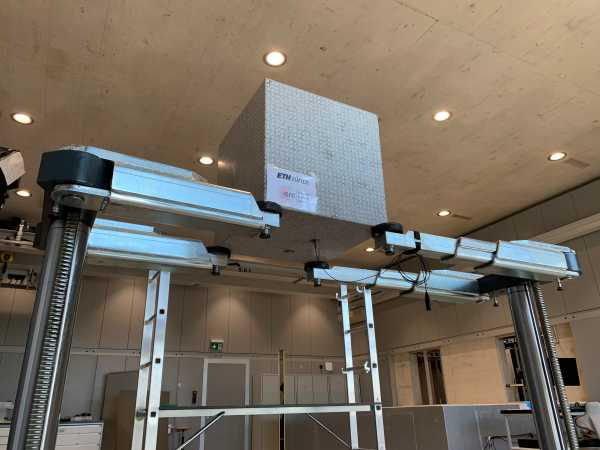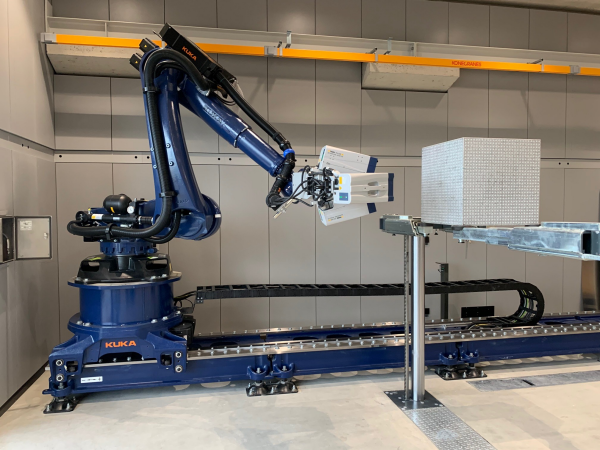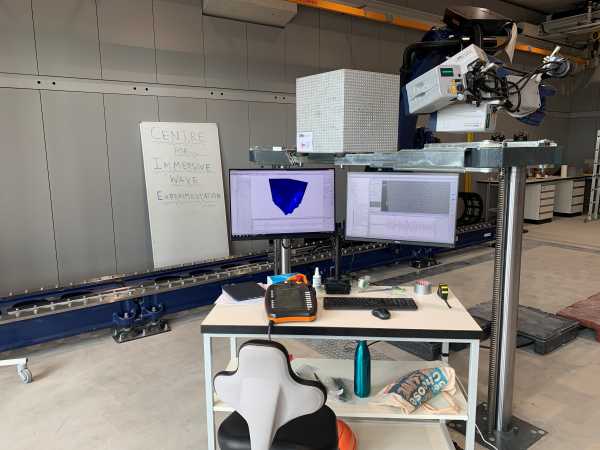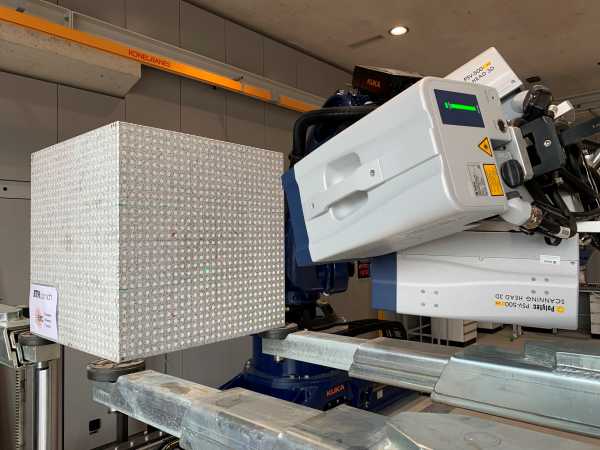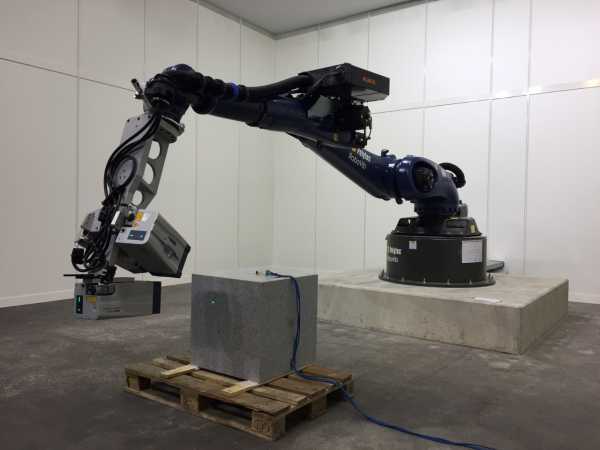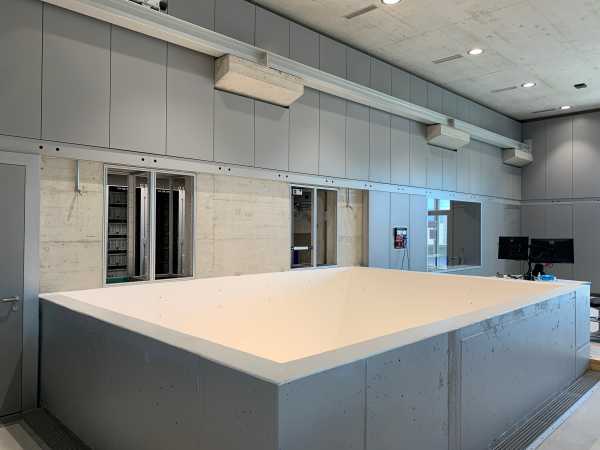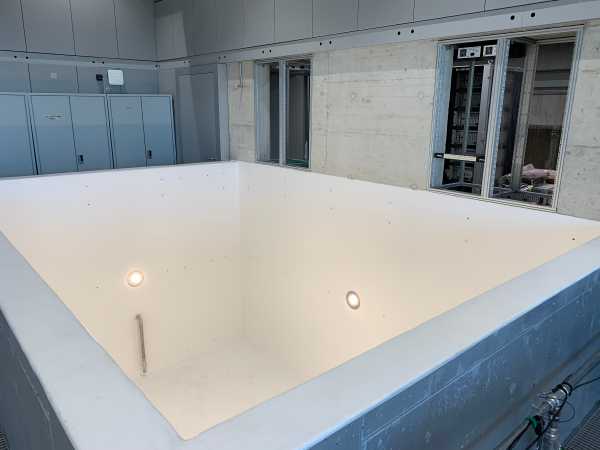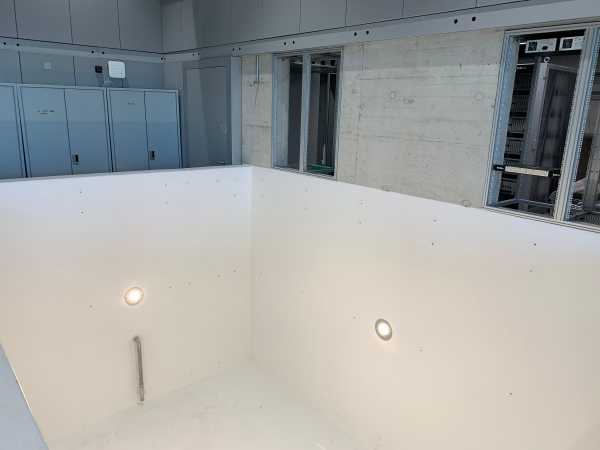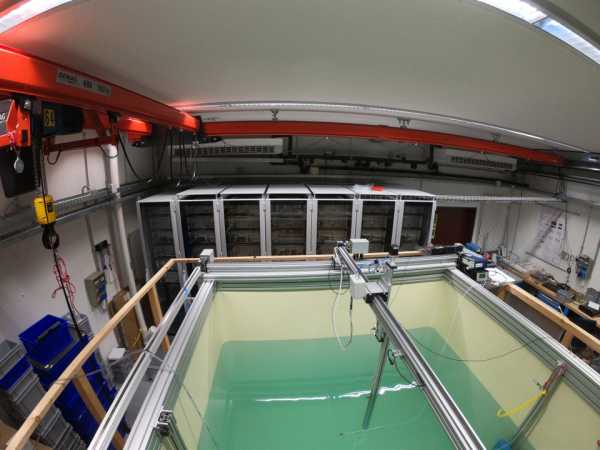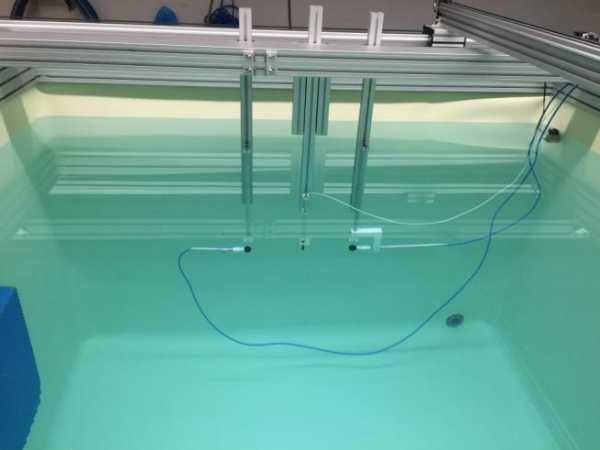Centre for Immersive Wave Experimentation

The Centre for Immersive Wave Experimentation comprises the MATRIX and WaveLab projects. These projects aim to establish a fundamentally new approach to seismic wave experimentation that involves fully immersing a physical seismic experiment within a virtual numerical environment, literally connecting the disciplines of laboratory wave experimentation and numerical modelling.
Immersive experimentation thus is a new paradigm for wave-based laboratory experimentation aimed at overcoming laboratory- and sample-size related limitations that plague conventional wave propagation experimentation. Using so-called immersive boundary conditions a physical experimentation domain or elastic rock volume can be immersed in an arbitrary larger numerical domain in such a way that the waves in the physical domain drive the simulation in the numerical domain and vice-versa.
The MATRIX project comprises multiple laboratories for the investigation of elastic waves, while the WaveLab is dedicated to the study of acoustic wave phenomena. The Centre for Immersive Wave Experimentation is situated in the emerging external page Switzerland Innovation Park Zurich in Dübendorf, Zürich.
Key research topics and applications:
- Extension of the low-frequency end of laboratory wave experimentation
- Laboratory measurements of non-physical phenomena
- Physical implementation of periodic boundary conditions
- Broadband acoustic cloaking and holography
- Metamaterial experimentation
- Data-driven wavefield focusing
MATRIX (MAchine for Time Reversal and Immersive eXperimentation) is a European Research Council funded research project and one of four ERC Advanced Grants awarded to ETH in 2015.
MATRIX establishes several laboratories for elastic immersive wave experimentation. Using a robotized three-component scanning Laser Doppler Vibrometer (LDV), waves are sensed at the boundaries of the experimentation domain. The recorded wavefields are decomposed at the boundary and their reflections actively suppressed utilizing novel methods for wavefield injection via dense source arrays.
Waves incident on the boundary are also extrapolated through the larger numerical domain using pre-computed Green’s functions and re-emitted into the experimentation domain, eventually enabling multiple scattering interactions between the laboratory and numerical domain.
WaveLab
For the 3D laboratory, water is chosen as the background medium because of its relative ease of integrating sensors and sources, and lower propagation velocities and impedance differential compared to solids. The laboratory is constructed such that the physical area of interest is surrounded by a recording surface densely populated with sensors while the walls of the tank are lined with acoustic projectors.
The data from the sensors is then fed into an acquisition, compute and control system which is able to compute, in real-time, the wavefield and it's interaction with the surrounding numerical domain as it approaches the acoustic projectors. The interaction between the physical and numerical domain takes place at the edge of the physical laboratory and is governed by immersive boundary conditions. The wavefield is constructed in such a way that it both cancels the reflections from the walls and creates the signals that return from the numerical domain.
WaveLab is pushing the frontier of high performance computing. We have partnered with National Instruments to develop an acquisition, compute and control system able to compute in microseconds an intricate wavefield at hundreds of locations. The system contains over 500 FPGAs and employs National Instrument’s FPGA-based FlexRio data acquisition technology. WaveLab also requires large quantities of high-quality underwater transducers, which were designed and constructed in collaboration with Prof. Michael Haberman and his group at the University of Texas at Austin.
In addition to the 3-D underwater acoustic laboratory, 1-D and 2-D immersive laboratories in air-filled waveguides have been constructed.
Acquisition, Compute and Control System
The physical implementation of the immersive boundary conditions is achieved using a bespoke low-latency, high-performance acquisition, compute and control system built in collaboration with National Instruments™ and part-funded through SNF R'EQUIP (Grant 157684).
To cancel the outgoing waves at the edge of the experimental domain, the waves arriving there have to be predicted ahead of time. This is achieved by extrapolating the wavefield from a mathematically-closed recording surface positioned some 30-60 cm away from the walls of the tank. Thus, the acquisition, extrapolation and control steps cannot take longer than 200 µs in total, which is the time it takes for an acoustic wave to propagate the 30 cm from the recording surface to the walls of the tank. Furthermore, since the immersive boundary conditions are non-local both in space and time, the compute and memory requirements are high.
A system capable of extrapolating wavefield values from 800 sensors to 800 boundary sources (and through the numerical environment) for 250 time-steps into the future was realized. The system consists of over 500 FPGAs and uses NI's FPGA-based acquisition and control platform: FlexRIO. Critically, it also relies on direct memory access (DMA) and peer-to-peer (P2P) streaming technology to achieve the low latency of 200 µs.
The system is used both for the real-time acoustic implementations that are part of the WaveLab, as well as to drive all the multi-component actuators in the MATRIX project.
Related publications
Acoustic Cloning
Müller Jonas, Theodor S. Becker, Li Xun, Aichele Johannes, Serra-Garcia Marc, Robertsson, J. O. A. and van Manen, D.-J.
Phys. Rev. Appl., 20(6), 064014 (2023)
external page doi.org/10.3929/ethz-b-000647282
Boundless Metamaterial Experimentation: Physical Realization of a Unidirectional Virtual Periodic Boundary Condition
Thomsen Henrik R., Zhao Bao and Colombi Andrea
Phys. Rev. Appl., 19(6), 064019 (2022)
external page doi.org/10.3929/ethz-b-000625630
Real-time immersion of physical experiments in virtual wave-physics domains
Theodor S. Becker, Börsing, N., Haag, T., Bärlocher, C., Donahue, C. M., Curtis, A., Robertsson, J. O. A. and van Manen, D.-J.
Phys. Rev. Appl., 13(6), 064061 (2020)
external page journals.aps.org/prapplied/abstract/10.1103/PhysRevApplied.13.064061
Immersive wave experimentation: linking physical laboratories and virtual simulations in real-time
Becker, T. S.
PhD Thesis, ETH Zürich (2020).
external page doi.org/10.3929/ethz-b-000410579
Elastic immersive wave experimentation: Theory and physical implementation
Thomsen, H. R., Molerón, M., Haag, T., van Manen, D.-J. and Robertsson, J. O. A.
Phys. Rev. Res., 1(3), 033203 (2019)
external page doi.org/10.1103/PhysRevResearch.1.033203
Compensating for source directivity in immersive wave experimentation
Li, X., Robertsson, J., Curtis, A. and van Manen, D.-J.
J. Acoust. Soc. Am., 146(5), 3141–3158. (2019)
external page doi.org/10.1121/1.5131029
Cloaking and Holography Experiments Using Immersive Boundary Conditions
Börsing, N., Becker, T. S., Curtis, A., van Manen, D.-J., Haag, T. and Robertsson, J. O. A.
Phys. Rev. Appl., 12(2), 024011 (2019)
external page doi.org/10.1103/PhysRevApplied.12.024011
Acoustic transducer design for active reflection cancellation in a finite volume wave propagation laboratory
Willard, E.
MSc Thesis, The University of Texas at Austin (2019)
external page dx.doi.org/10.26153/tsw/2931
Immersive wave propagation experimentation: Physical implementation and one-dimensional acoustic results
Theodor S. Becker, Dirk-Jan van Manen, Carly M. Donahue, Christoph Bärlocher, Nele Börsing, Filippo Broggini, Thomas Haag, Johan O. A. Robertsson, Darren R. Schmidt, Stewart A. Greenhalgh, and Thomas E. Blum
Phys. Rev. X (2018)
external page doi.org/10.1103/PhysRevX.8.031011
Characterization of interface reflection coefficients using a finite-difference injection technique
Nele Börsing, Carly M. Donahue, Dirk-Jan van Manen, Lasse Amundsen, and Johan O. A. Robertsson
The Journal of the Acoustical Society of America, 142, EL579 (2017)
external page doi.org/10.1121/1.5016467
Broadband cloaking and holography with exact boundary conditions
van Manen, D.-J., Vasmel, M., Greenhalgh, S., and Robertsson, J. O. A.
The Journal of the Acoustical Society of America, 137, EL415-EL421 (2015)
external page dx.doi.org/10.1121/1.4921340
Immersive experimentation in a wave propagation laboratory
Vasmel, M., Robertsson, J. O. A., van Manen, D.-J. and Curtis, A.
The Journal of the Acoustical Society of America, 134, EL492-EL498 (2013)
external page dx.doi.org/10.1121/1.4826912
Conference presentations
Immersive wave control experimentation using compensated directive sources
Li, X., Börsing, N., Becker, T. S., van Manen, D.-J., Curtis, A. and Robertsson, J. O. A.
J. Acoust. Soc. Am., 146(4), 2866–2867 (2019)
external page doi.org/10.1121/1.5136946
1-D elastic immersive wave experimentation in an aluminum beam
Thomsen, H. R., Moleron, M., Haag, T., van Manen, D.-J. and Robertsson, J. O. A.,
J. Acoust. Soc. Am., 146(4), 2919–2919 (2019)
external page doi.org/10.1121/1.5137129
Immersive boundary conditions for meta-material experimentation
van Manen, D.-J., Moleron, M., Thomsen, H. R., Börsing, N., Becker, T. S., Haberman, M. R. and Robertsson, J. O. A.
J. Acoust. Soc. Am., 146(4), 2786–2786 (2019)
external page doi.org/10.1121/1.5136649
Immersive wave propagation experiments in a two-dimensional acoustic waveguide
Becker, T. S., Börsing, N., van Manen, D.-J., Haag, T., Donahue, C. M., Curtis, A. and Robertsson, J. O. A.,
J. Acoust. Soc. Am., 146(4), 3078–3078 (2019)
external page doi.org/10.1121/1.5137682
Numerical simulations of acoustic cloaking in a real laboratory that deploys immersive boundary conditions
Börsing, N., Becker, T. S., Curtis, A., van Manen, D.-J., Haag, T., Bärlocher, C. and Robertsson, J. O. A.
J. Acoust. Soc. Am., 144(3), 1758–1758 (2018)
external page doi.org/10.1121/1.5067783
Immersive experimentation: A new paradigm for low-frequency acoustic and elastic wave propagation experimentation
van Manen, D.-J., Becker, T. S., Börsing, N., Thomsen, H. R., Moleron, M. and Robertsson, J. O. A.
J. Acoust. Soc. Am., 144(3), 1758–1758 (2018)
external page doi.org/10.1121/1.5067781
Physical implementation of immersive boundary conditions in acoustic waveguides
Becker, T. S., Börsing, N., van Manen, D.-J., Haag, T., Bärlocher, C. and Robertsson, J. O. A.
J. Acoust. Soc. Am., 144(3), 1759–1759 (2018)
external page doi.org/10.1121/1.5067788
Acoustic transducer design for active reflection cancellation in a finite volume wave propagation laboratory
Willard, E., Haberman, M. R., van Manen, D.-J., Robertsson, J. O. A., Becker, T. S. and Börsing, N.
J. Acoust. Soc. Am., 144(3), 1759–1759 (2018)
external page doi.org/10.1121/1.5067787
Exact wavefield separation on an elastic-free surface with sharp corners
Thomsen, H., van Manen, D.-J. and Robertsson, Johan O. A.
SEG Technical Program Expanded Abstracts (2018)
Immersive Wave Experimentation: Extreme Low-Latency and HPC Requirements enabled by FPGA Technology
van Manen, D.-J., Bärlocher, C., Becker, T. S., Blum, T., Boersing, N., Broggini, F., Donahue, C. M., Elison, P., Haag, T., Moleron, M., Robertsson, J. O., Schmidt, D., Thomsen, H. R., Vasmel, M. and Wenzel, L.
PASC17 Conference (2017)
Mimicking metamaterial functionalities in an immersive laboratory with exact boundary conditions
Moleron, M., van Manen, D.-J. and Robertsson, J. O. A
META’17, the 8th International Conference on Metamaterials, Photonic Crystals and Plasmonics (2017).
Physical implementation of immersive boundary conditions in one dimension
Becker, T. S., van Manen, D.-J., Donahue, C. and Robertsson, J. O. A.
J. Acoust. Soc. Am., 141(5), 3833–3833 (2017)
external page doi.org/10.1121/1.4988519
Dynamically linking seismic wave propagation at different scales
Broggini, F., Vasmel, M., Robertsson, J. O. A. and van Manen, D.-J.
PASC16 Conference (2016)
Current CIWE members
Christoph Bärlocher, Theodor Becker, Thomas Haag, Xun Li, Johan Robertsson, Marc Serra Garcia, Henrik Thomsen, and Dirk-Jan van Manen.
Former members
Thomas Blum, Nele Börsing, Filippo Broggini, Carly Donahue, Patrick Elison, Miguel Moleron, and Marlies Vasmel.

